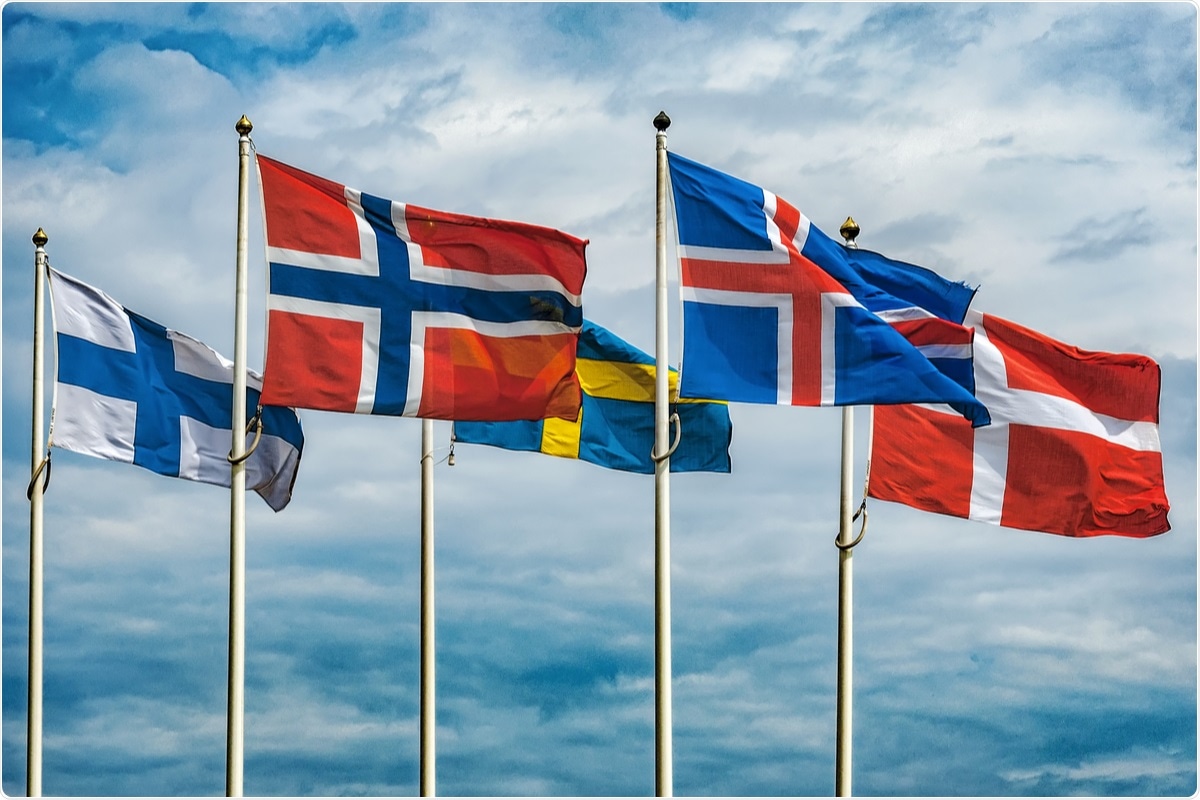A team of international scientists has recently assessed the strategies adopted by the Nordic countries to curb the trajectory of the coronavirus disease 2019 (COVID-19) pandemic. Their findings reveal that to decrease the transmission of severe acute respiratory syndrome coronavirus 2 (SARS-CoV-2), it is important to minimize the number, size, and duration of transmission clusters by limiting large-scale gatherings and subsequent mixing of people in the community. A preprint version of the study is available on the medRxiv* server while the article undergoes peer review.
 Study: Assessment of COVID-19 intervention strategies in the Nordic countries using genomic epidemiology. Image Credit: Antony McAulay/ Shutterstock
Study: Assessment of COVID-19 intervention strategies in the Nordic countries using genomic epidemiology. Image Credit: Antony McAulay/ Shutterstock

 This news article was a review of a preliminary scientific report that had not undergone peer-review at the time of publication. Since its initial publication, the scientific report has now been peer reviewed and accepted for publication in a Scientific Journal. Links to the preliminary and peer-reviewed reports are available in the Sources section at the bottom of this article. View Sources
This news article was a review of a preliminary scientific report that had not undergone peer-review at the time of publication. Since its initial publication, the scientific report has now been peer reviewed and accepted for publication in a Scientific Journal. Links to the preliminary and peer-reviewed reports are available in the Sources section at the bottom of this article. View Sources
Background
Despite similar demographics and political structures, the Nordic countries, including Norway, Denmark, Iceland, Finland, and Sweden, had adopted different strategies to control SARS-CoV-2 transmission during the first phase of the pandemic when no vaccines were available. In contrast to Sweden, where more relaxed pandemic-curbing interventions were adopted, Norway, Denmark, and Finland initially went for a strict nationwide lockdown. In Iceland, the focus was mostly on testing and contact tracing.
In the current study, the scientists have examined the impact of COVID-19 mitigation strategies adopted by the Nordic countries on the propagation, evolution, and transmission of SARS-CoV-2.
Study design
The scientists collected and aligned all Nordic and global sequences of SARS-CoV-2 available in the GISAID (Global Initiative on Sharing Avian Influenza Data) and the Nextstrain databases, respectively. From each alignment, they generated a phylogenetic tree to analyze transmission clusters. The transmission cluster is the monophyletic clustering of more than one viral sequence from the same country.
They primarily examined the number of transmission clusters, cluster size (the number of cases in each cluster), and duration of the cluster (the time between the first and last case). In addition, they determined the correlation between cluster size and duration.
Important observations
Comparing cluster numbers between different Nordic countries revealed that Sweden has the highest number of clusters, followed by Denmark, Norway, and Finland. The lowest number of clusters was observed in Iceland.
Similarly, comparing cluster sizes between different countries revealed that Sweden and Denmark have the largest and comparable cluster size, followed by Norway, Finland, and Iceland. Except for Finland and Iceland, other Nordic countries exhibited an induction in cluster size during winter (September – December 2020).
Alike cluster size, the cluster duration showed a similar trend, with Sweden and Denmark having the highest cluster duration compared to other Nordic countries. In contrast to the cluster size, the cluster duration exhibited a decreasing trend during the winter season. Moreover, a significant positive correlation was observed between the size and duration of transmission clusters.
Study significance
The study highlights the variation in number, size, and duration of SARS-CoV-2 transmission clusters in Nordic countries.
The largest cluster size observed in Sweden and Denmark indicates that one primary infection/source is responsible for multiple secondary infections. The induction in cluster size observed during winter could be due to more indoor activities that subsequently increase the contact frequency and risk of transmission. Another reason could be waiving of COVID-19-related restrictions during the autumn. Importantly, a reduction in cluster size observed towards the end of winter could be due to government-imposed restrictions.
Completely different cluster characteristics observed in Iceland could be due to its isolated location and small population size. In Norway and Finland, strict measures (rigorous testing, contact tracing, and isolation) have been implemented to curb viral transmission. This coincides with the significantly shorter cluster duration than Sweden and Denmark.
Overall, the study highlights the significance of country-specific control measures in curbing the viral spread. As mentioned by the scientists, countries should focus more on restricting dense gatherings and subsequent mixing of people in the community.

 This news article was a review of a preliminary scientific report that had not undergone peer-review at the time of publication. Since its initial publication, the scientific report has now been peer reviewed and accepted for publication in a Scientific Journal. Links to the preliminary and peer-reviewed reports are available in the Sources section at the bottom of this article. View Sources
This news article was a review of a preliminary scientific report that had not undergone peer-review at the time of publication. Since its initial publication, the scientific report has now been peer reviewed and accepted for publication in a Scientific Journal. Links to the preliminary and peer-reviewed reports are available in the Sources section at the bottom of this article. View Sources
Article Revisions
- Apr 12 2023 - The preprint preliminary research paper that this article was based upon was accepted for publication in a peer-reviewed Scientific Journal. This article was edited accordingly to include a link to the final peer-reviewed paper, now shown in the sources section.